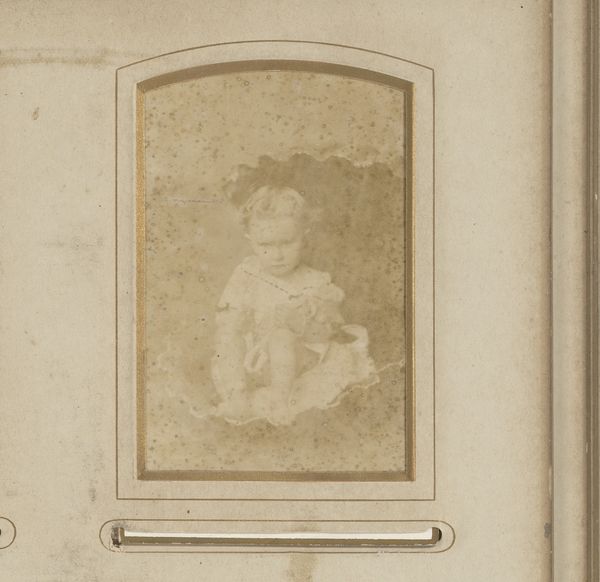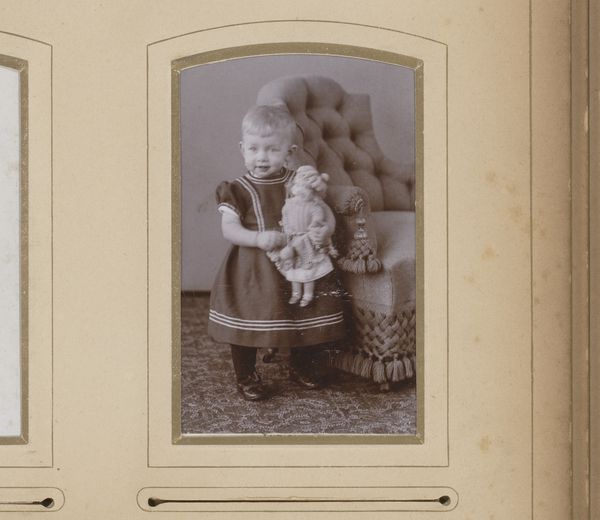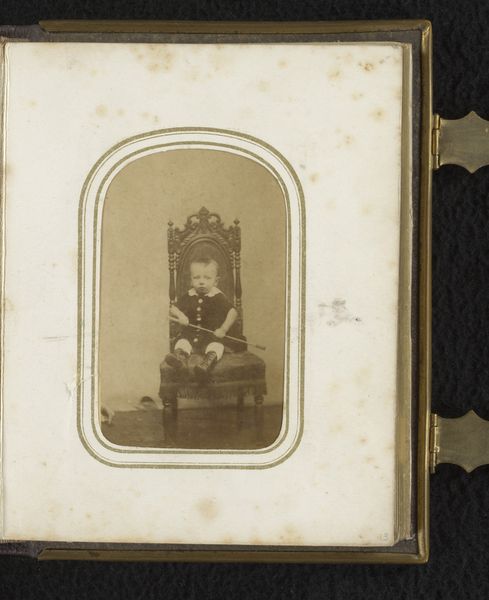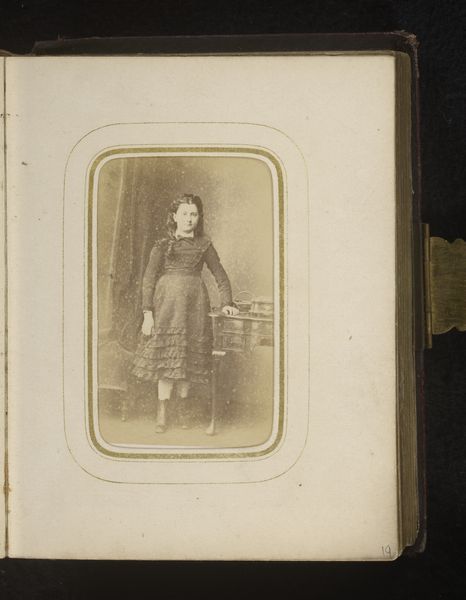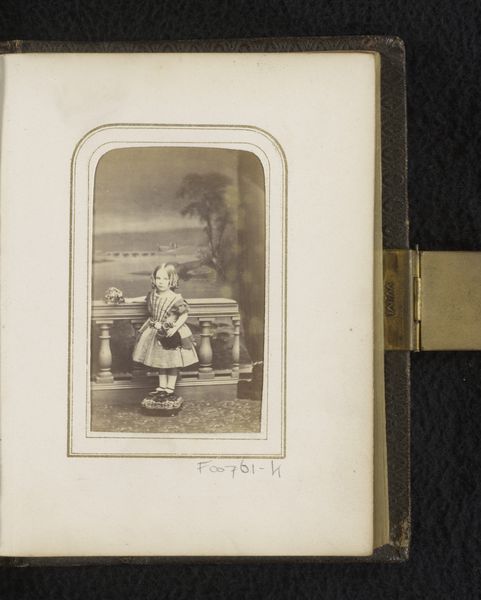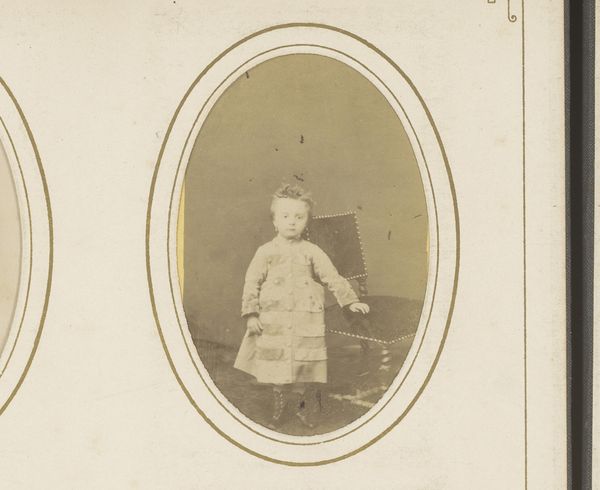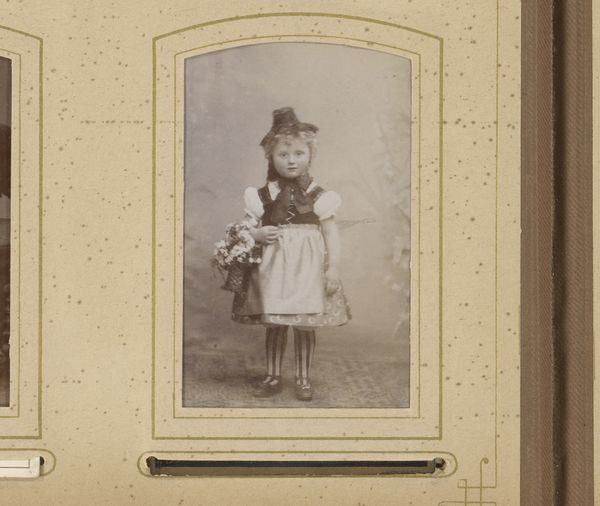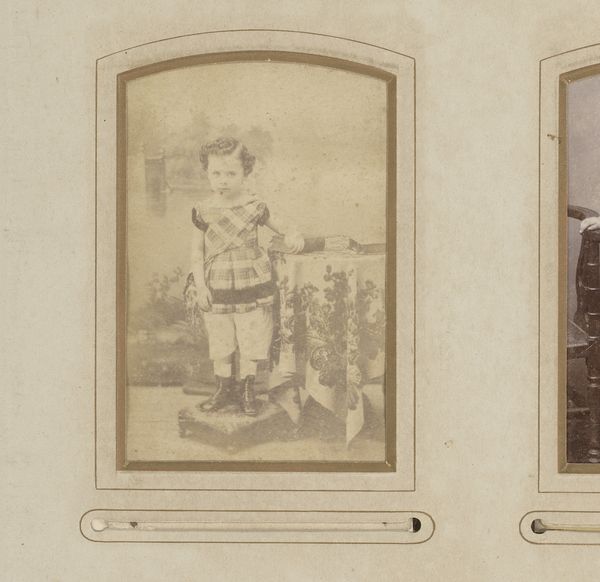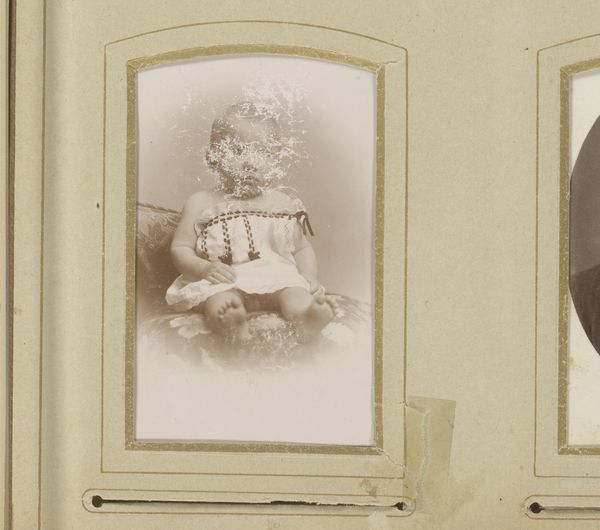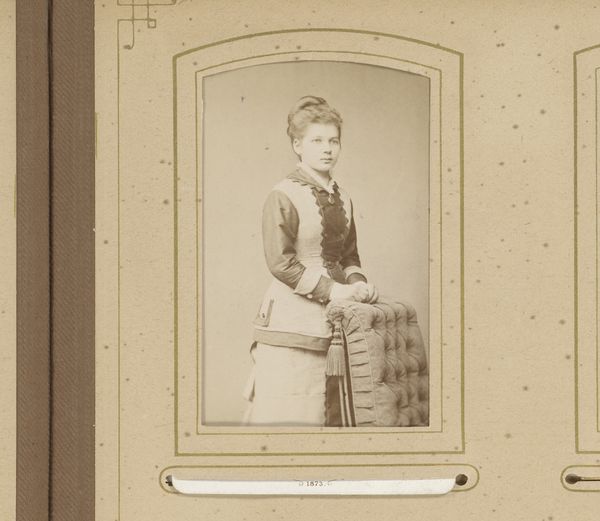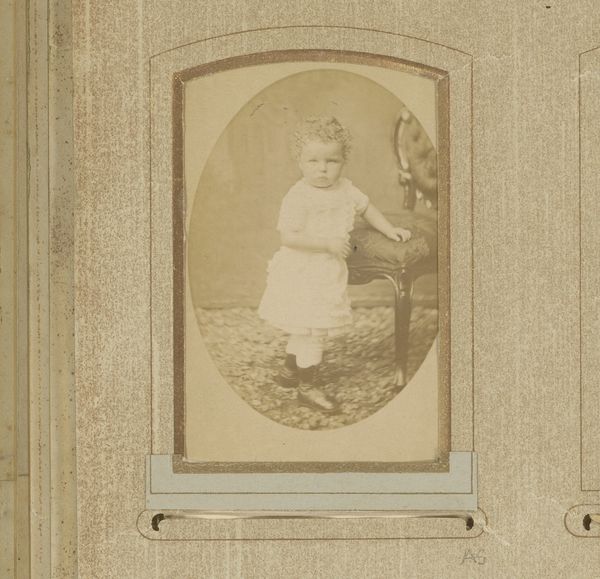
photography
#
portrait
#
photography
#
genre-painting
#
realism
Dimensions: height 82 mm, width 51 mm
Copyright: Rijks Museum: Open Domain
Curator: Oh, my. Looking at this tintype is like gazing through a faded memory. Editor: This is “Portret van een meisje met hoed, staand bij een stoel”, a photograph, most likely a salted paper print, by R. Schneider, dated sometime between 1860 and 1900. It's the portrait of a girl standing next to a chair. I find the textured matte board quite beautiful. It's become somewhat distressed over the decades. Curator: Distressed is an understatement, perhaps even perfect, considering how powerfully time erodes, enhances, and shapes so much, the photographic print most especially. But more than that, that little girl's serious expression hits right through you. It makes me think about all that child labour... How were children treated during those decades? Editor: Certainly! While it’s impossible to tell definitively from this particular image, the production and distribution of photographic portraits had a considerable social impact. Images such as these became increasingly accessible to a growing middle class. With new production technologies available, more affordable portraits served as family heirlooms passed from one generation to the next. Curator: Yes, exactly, and considering that the young girl here has quite an intense gaze as if something heavy is weighing on her young spirit, I sense deep currents moving below the surface in her childhood—as if she anticipates something unsettling about her place and position. You sense it too, I bet, if you let your intuition wander just for a bit… Editor: The realism in early portrait photography allowed the wealthy patrons and middle-class patrons to show off how lavish their family might have been during the peak industrial revolution. If you focus on the materiality in this photograph, the portrait, its very objectness, really shines. The details in the patterned dress or her small heeled boots. It might be perceived by the middle class to represent an idea about what children’s role and possibilities are. I like to analyze what happens when art crosses from one patron's hand into the home and later in history, an art gallery or a collection like this. Curator: I find this so revealing because if art truly opens itself to meet those hands with intention, perhaps those hands—your hands and mine—also learn to meet each other differently.
Comments
No comments
Be the first to comment and join the conversation on the ultimate creative platform.
